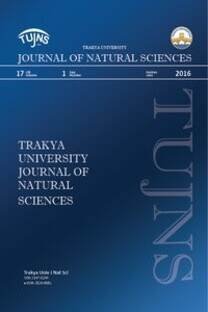HTML, XML ve WEB SERVİSLERİNİN İNTERNET SUNUCULARI ÜZERİNDEKİ ETKİSİNİN İNCELENMESİ
XML, Web Servisleri, İnternet Sunucuları, Performans
EXAMINING THE EFFECTS OF HTML, XML AND WEB SERVICES ON INTERNET SERVERS
XML, Web Services, Internet Servers, Performance,
___
- 1. Berger D., Reitter D., Stede M., XML/XSL in the dictionary: the case of discourse markers, International Conference On Computational Linguistics, Proceedings of the 2nd workshop on NLP and XML - Volume 17, Sayfa 1-8, 2002
- 2. Brent M. R., Surface cues and robust inference as a basis for the early acquisition of subcategorization frames, Lingua, Volume 92, Sayfa 433-470, 1994
- 3. Cai, M., A Comparison of Alternative Encoding Mechanisms for Web services. 13th International Conference on Database and Expert Systems Applications, Aix en Provence, France, 2002
- 4. Chiu K., Investigating the Limits of SOAP Performance for Scientific Computing. IEEE International Symposium on High Performance Distributed Computing, Edinburgh, Scotland, 2002
- 5. Kamps J., Rijke M., and Sigurbjörnsson B., Length normalization in XML retrieval, BNAIC-2004: Proceedings of the 16th Belgium-Netherlands Conference on Artificial Intelligence, pages 369-370, 2004
- 6. Kamps J., Rijke M., and Sigurbjörnsson B., Jaap Kamps, Maarten de Rijke, and Börkur Sigurbjörnsson. The importance of length normalization for XML retrieval, Information Retrieval, 8:631-654, 2005
- 7. MacManusR., The Evolution of Corporate Web Sites, 28 Nisan 2004, http://www.digitalWeb.com/articles/the_evolution_of_corporate_Web_sites/
- 8. Menasce D., Almeida V., Capacity Planning for Web services, Prentice Hall, Upper, Saddle River, NJ, 2002
- 9. Tian M., Voigt T., Naumowicz T., Ritter H., Schiller J., Performance Impact of Web Services on Internet Servers. International Conference on Parallel and Distributed Computing and Systems (PDCS 2003), Marina Del Rey, USA, Kasım 2003
- 10. Word Wide Web Consortium, (Web Standartlarını Belirleyen Birlik) http://www.w3.org/,
- ISSN: 1305-6468
- Yayın Aralığı: 1
- Başlangıç: 2000
- Yayıncı: -
ÇANAKKALE BÖLGESİ CHIRONOMIDAE (DIPTERA) LARVALARI VE YAYILIŞLARI
DİYARBAKIR KIRSALINDAKİ GÜVERCİN EVLERİ: BORANHANELER, KARAÇALI (TİLALO) KÖYÜ
MPEG AKIMINI GEÇİCİ REFERANS NUMARALARINI KULLANARAK ŞİFRELEME
Deniz TAŞKIN, Nurşen SUÇSUZ, Cem TAŞKIN
POWER INTENSIFICATION OF SWELLING PROCESS
Ahmet Emin TURGUT, Ömer Faruk BAYKOÇ
RAZAKI ÜZÜM ÇEŞİDİNDE OVARYUM GELİŞİMİ ÜZERİNE
GA UYGULAMASININ ETKİLERİ, İlknur KORKUTAL, Öznur GÖKHAN
GERİ DÖNÜŞTÜRÜLMÜŞ ATIK BETONLARDA SİLİS DUMANININ ETKİLERİ
İsmail KILIÇ, Abdullah KADAYIFÇI
WAVELET İLE DAYANIKLI MPEG VİDEO DAMGALAMA
HTML, XML ve WEB SERVİSLERİNİN İNTERNET SUNUCULARI ÜZERİNDEKİ ETKİSİNİN İNCELENMESİ
